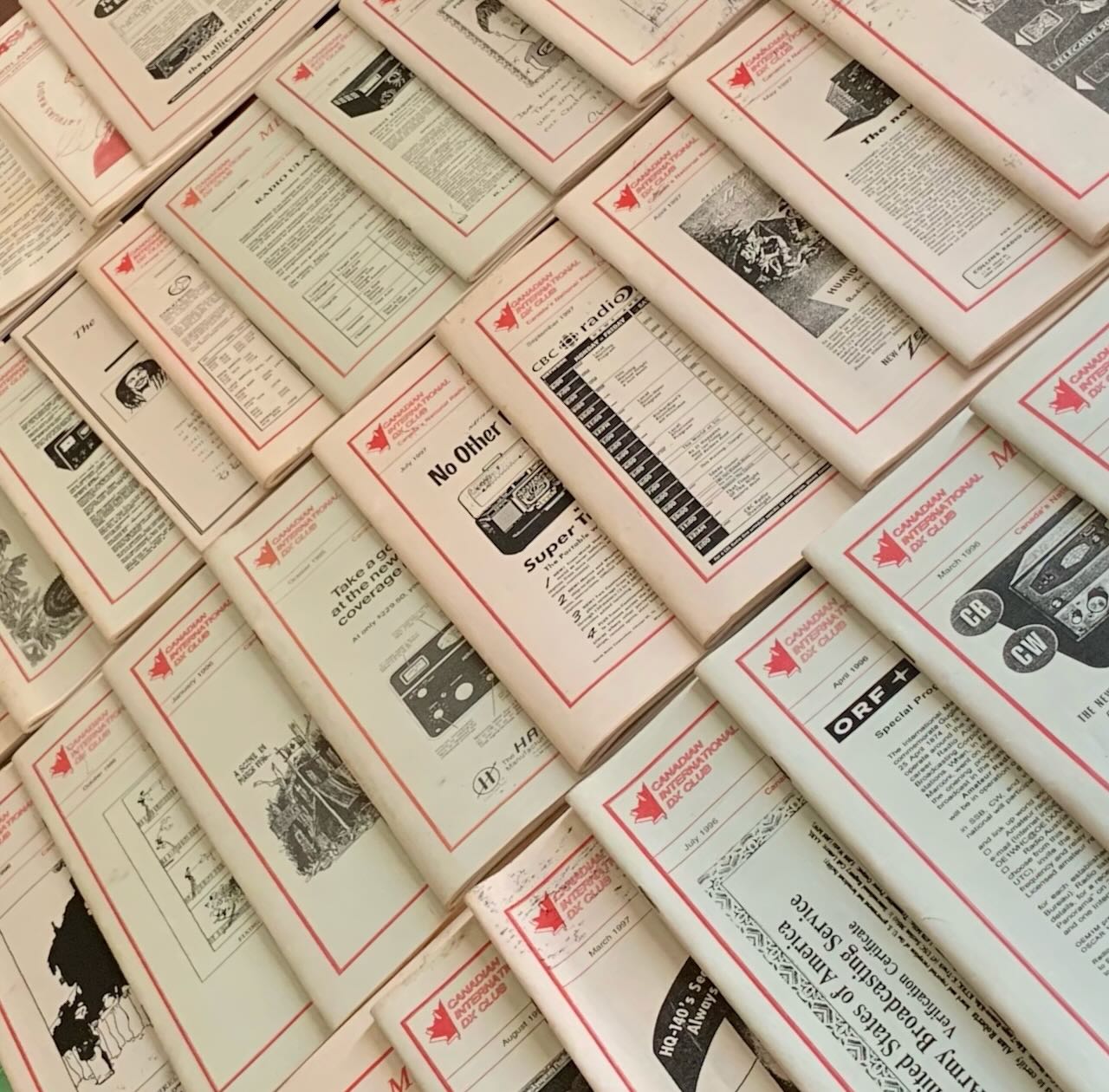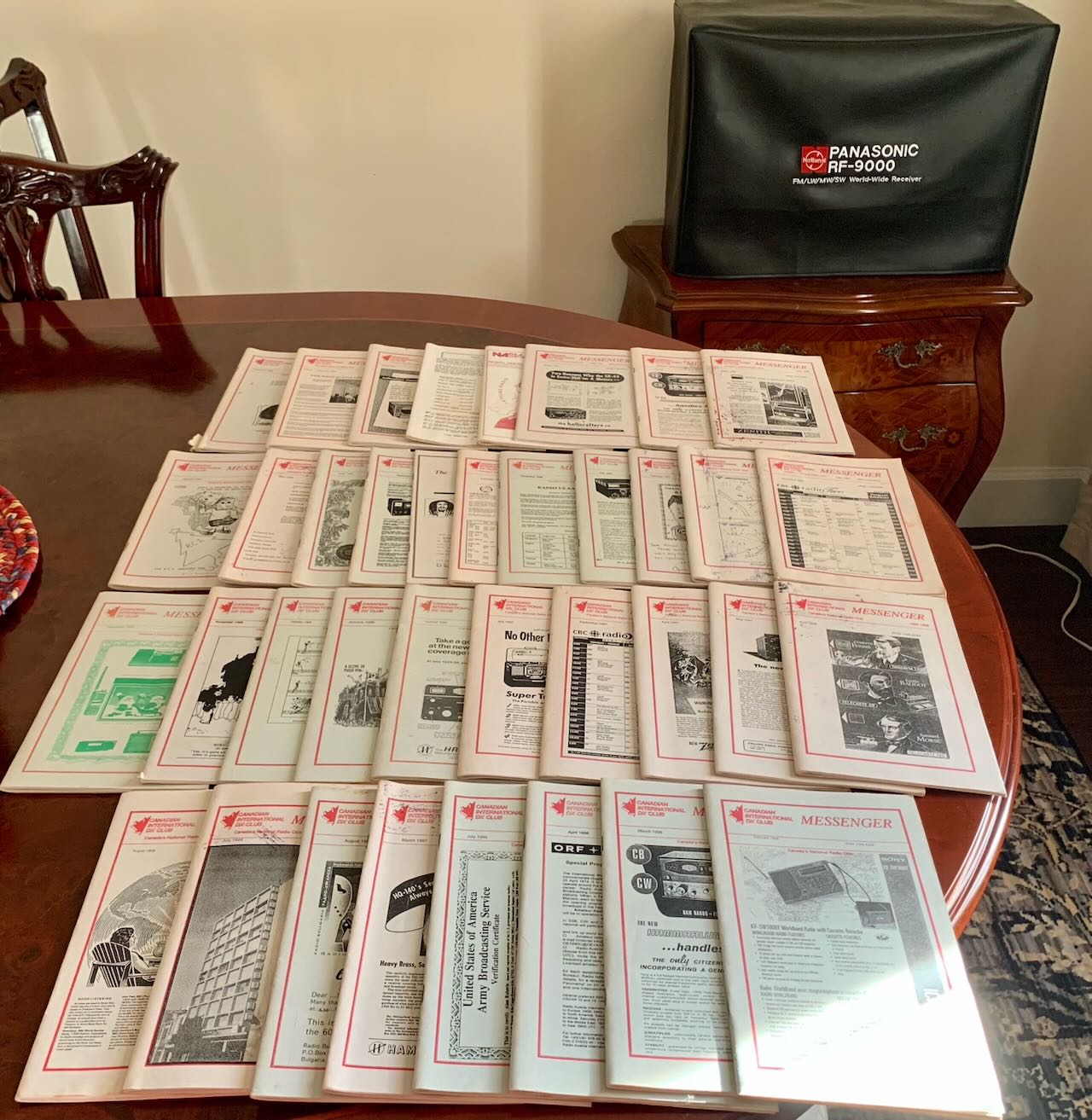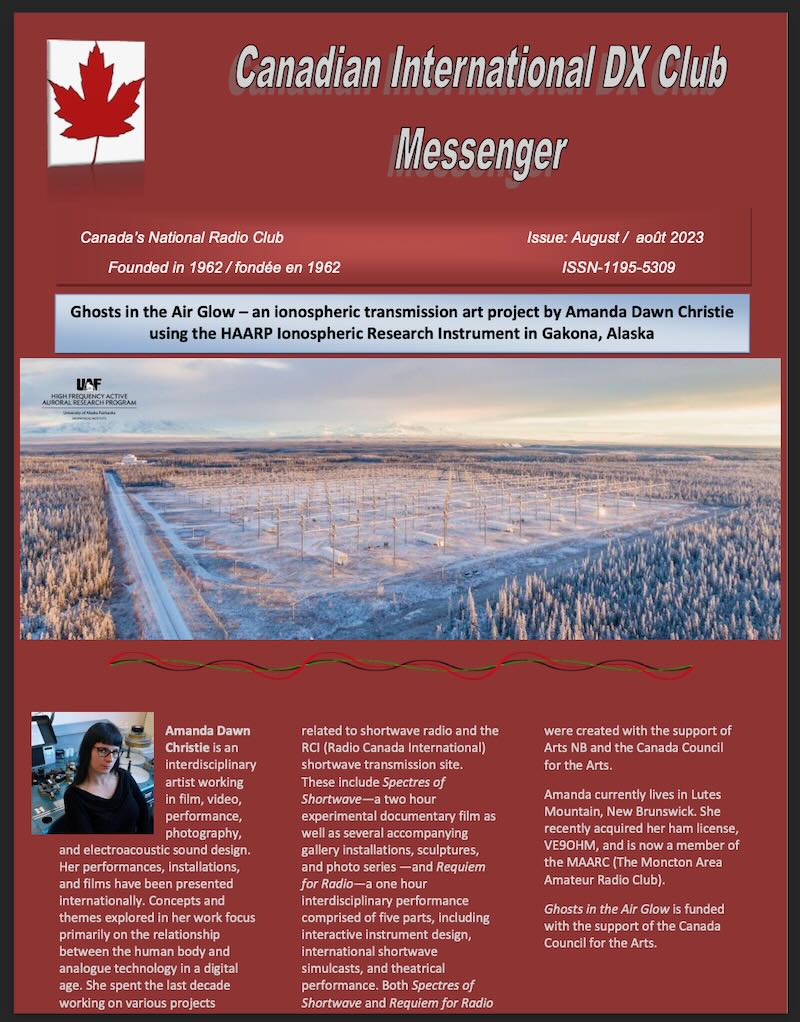 Many thanks to SWLing Post contributor, Luke Perry, who writes:
Many thanks to SWLing Post contributor, Luke Perry, who writes:
Hi Thomas, thought that you and your readers would enjoy my recent “find.” I came across an old copy of the “Messenger”, which was a magazine put out monthly by the Canadian International DX Club.
While looking for the current garbage bill I was shuffling through my file of bills and receipts, and lo and behold I came across one copy……how it ever got in there I have no idea. Anyway it sparked a lot of nostalgia and remember how excited I used to be when a new copy arrived in the mail.
I knew that I had more, but had no idea where as I tend to not throw things away, especially anything associated with electronics or cars. After a day or so of brainstorming I had an idea of where they might be, and lo and behold there they were.
They mostly date from the mid-90’s right before the internet basically killed off “zines” like this. Oh well.. progress marches on.
Anyway, I hope that people can enjoy the pictures and maybe have some insight or memories of the club and/or the guy who ran it. I believe that his name was Sheldon.
Take care,
Luke Perry
Wow–what a treasure trove you unearthed there, Luke! I could spend hours looking through those copies!
Join the CIDX!
I have good news for you: The Canadian International DX Club (CIDX) is very much alive and well! Check out the cover of the the August ’23 issue of the Messenger above.
Here’s an article I posted about the CIDX in the past and how much I enjoy the Messenger. And yes, Sheldon Harvey is still at the helm along with some other amazing, devoted volunteers. I’m a member and I’d encourage everyone else to become one, too. It’s one of the best deals in the world of radio.
The Messenger is now in digital format only, but I actually prefer it this way since I’ve so little room to store printed material these days.
For more information about joining the CIDX–only $10 per year or $25 for three years–click here!
Thanks again, Luke, for sharing this!



Hi, Sheldon Harvey of CIDX here. Yes, CIDX is still alive and kicking. In fact, our membership is actually growing…believe it or not. Due in part to the dedicated efforts of our members, column editors and Board of Directors. CIDX has been around since 1962. We celebrated our 60th anniversary with a get-together in Edmonton, Alberta in 2022. We were one of the first clubs to switch to an electronic version of our monthly bulletin. We did that in February 2005. We are a general coverage club; not only focusing on shortwave broadcasting. We have added a lot of new columns and coverage over the years. We welcome members from anywhere in the world, not just from Canada. A free sample copy of our monthly bulletin is available for the asking. Send an e-mail to [email protected]
We put a lot of effort into what we do and are proud of the results.
CIDXC even makes it down to Australia each month. Always a great read! The CIDXC team do fantastic work for the radio hobby. And the membership subscription is really low!
This was news to me that they were still around. Keeping the faith they are!
Have to assume that these and all past editions have bxeen digitized somewhere and available online?
What is the average age of members? 75 years old?
Ageist comment? 🙂
It’s not an ageist comment. It is only a question. I’ve seen pictures of DX gatherings. Its as if a retirement home organised an outing.
Since ‘most’ young people are more interested in video games, or copying the latest inane trend on TikTok, then yes…….you will mostly find that it is older folks who are into ham/SWL.
Older folks are the ones keeping pretty much every hobbyist group together nowadays. Save for video gaming and stuff like dressing up as animals. Older dudes rock!
You made me laugh out loud like I haven’t in quite a while. Whether or not its an offensive comment I have no opinion on. Western Canada is on fire and you broke the tension. Thx dude.
You made me laugh out loud like I haven’t in quite a while. Whether or not its an offensive comment I have no opinion on. Western Canada is on fire and you broke the tension. Thx dude.
Don’t make assumptions about things you know nothing about! Young…old and anywhere in between! The efforts of Gilles Letourneau with his OfficialSWLChannel on YouTube have brought many, many new members to CIDX. We don’t ask for anyone’s age when they join.
The disadvantage of streaming is that either the signal comes from a fixed installation or via the cell phone network. The cell phone networks use the highest frequencies in terrestrial communications, which results in the smallest coverage area per transmitter. For large area coverage very large number of base stations are required which must also have radio feed system back to the telco headquarters. During emergencies it is unreliable because of electricity blackouts
Radio broadcasting uses lower frequencies which enables increasing coverage areas as the transmission frequency drops, peaking in the high frequency (Short Wave) band. The bandwidth of HD radio in the FM band is 400 kHz, analog FM, 200 kHz and DRM 100 kHz. The medium and high frequency bands in the Americas the bandwidth are 20 kHz in the MF band and 5 kHz in the HF band. Broadcasters in these bands use either AM or DRM. Digital Radio Mondiale can carry up to 4 channels per transmitter all have the same coverage area. The digital data channels may be audio, images or text and is configurable. An FM transmitter modified for DRM can carry 18 digital transmissions. The sound quality in all bands is like FM even in the high frequency band.
Since TV has vacated American channels 2 – 6, the vacant frequencies could carry all AM and FM broadcasts.
AM started when the T model ford did, the vehicles are going digital so should all broadcasters. Digital transmissions are much cheaper and less polluting than analog and HDRadio.